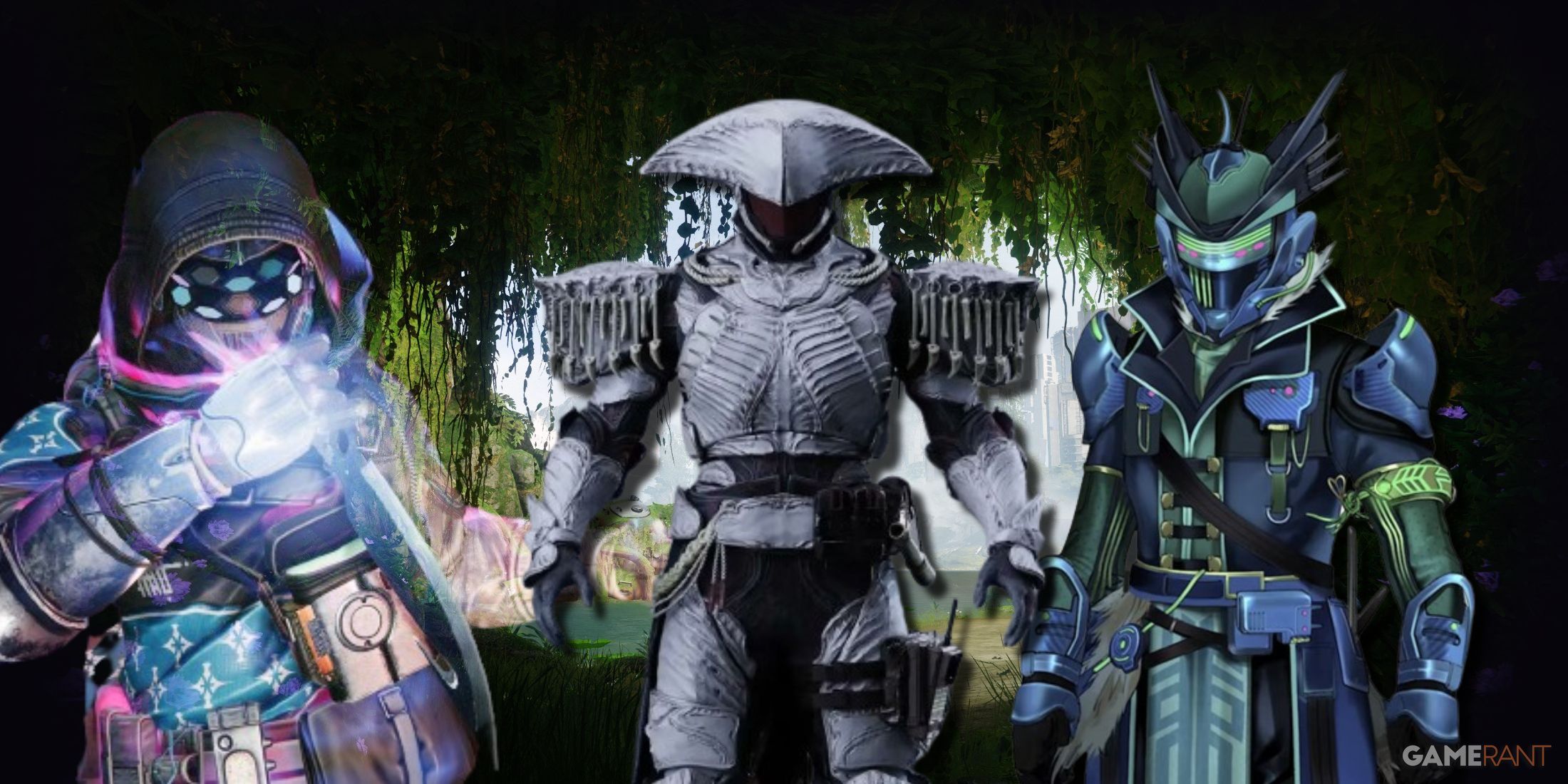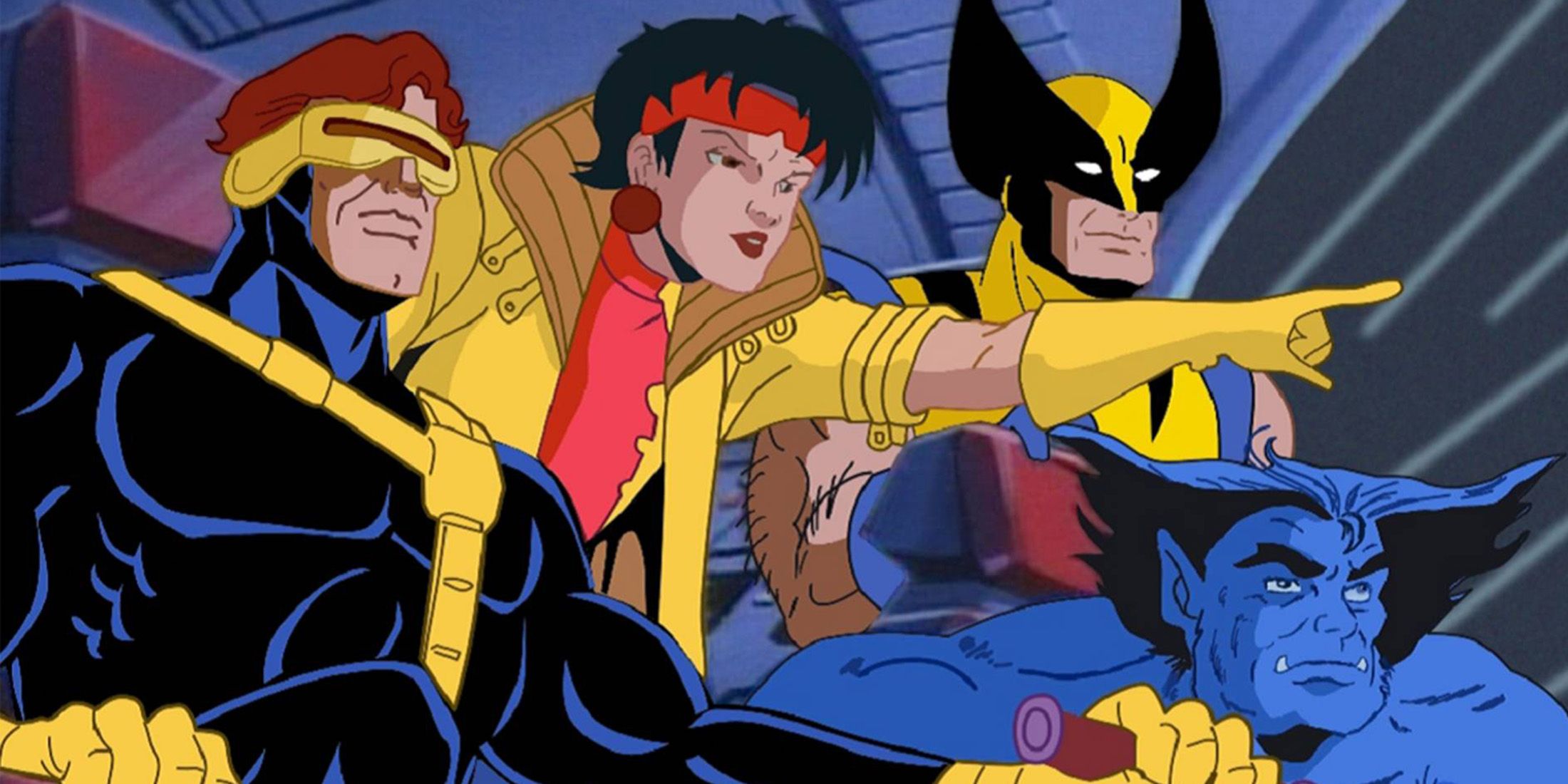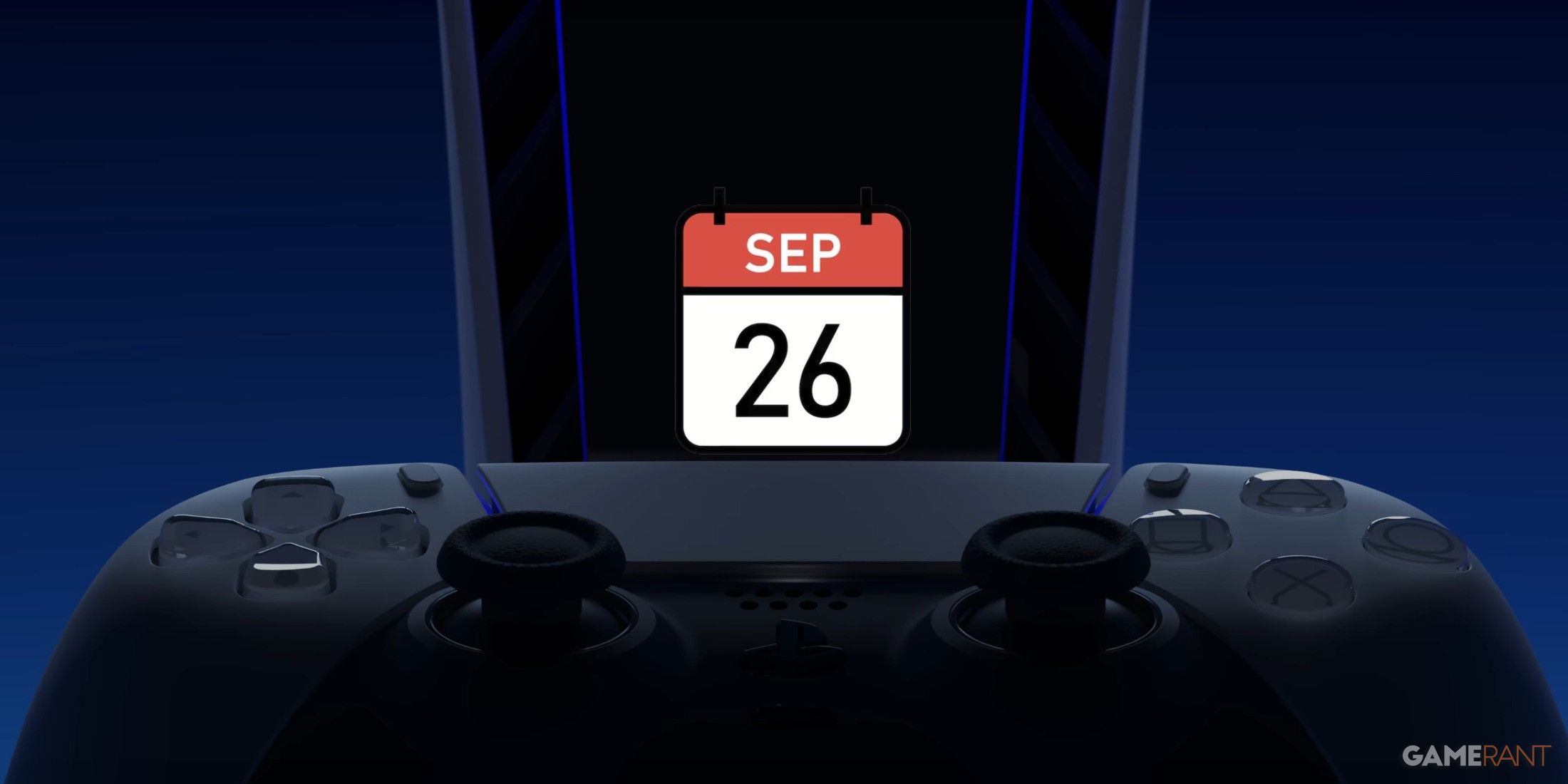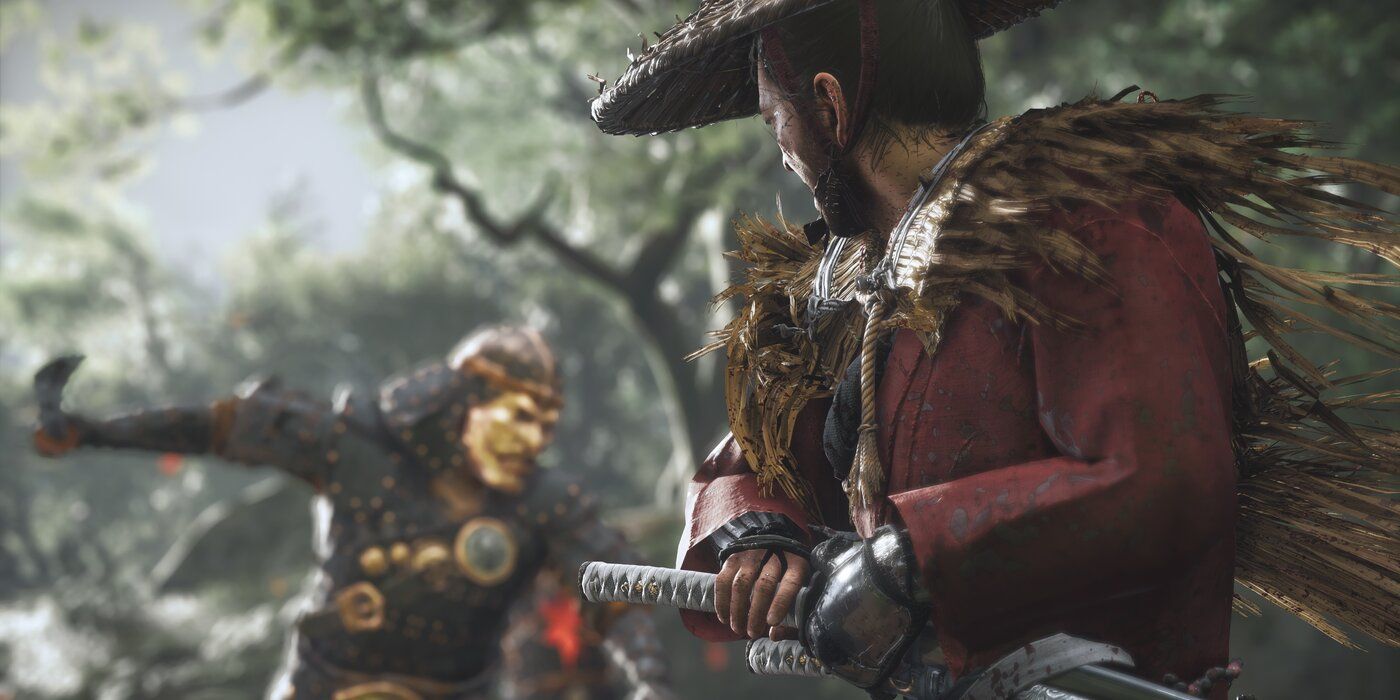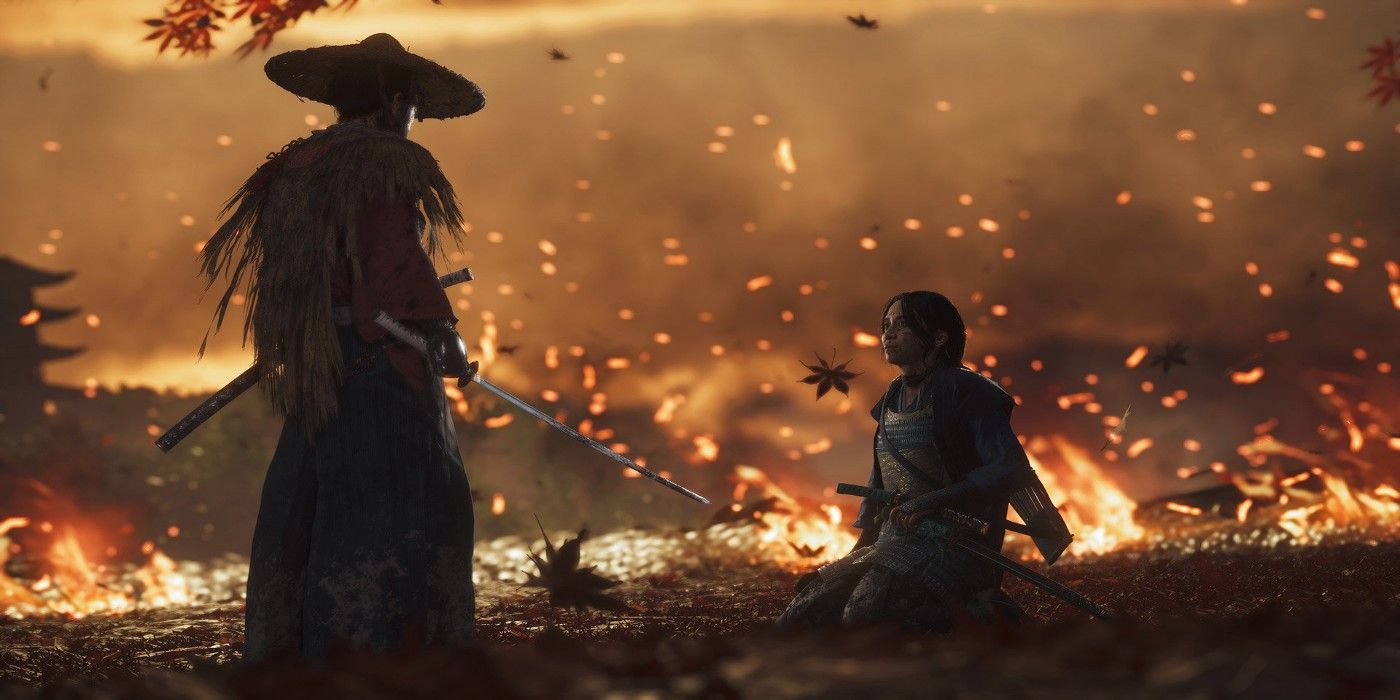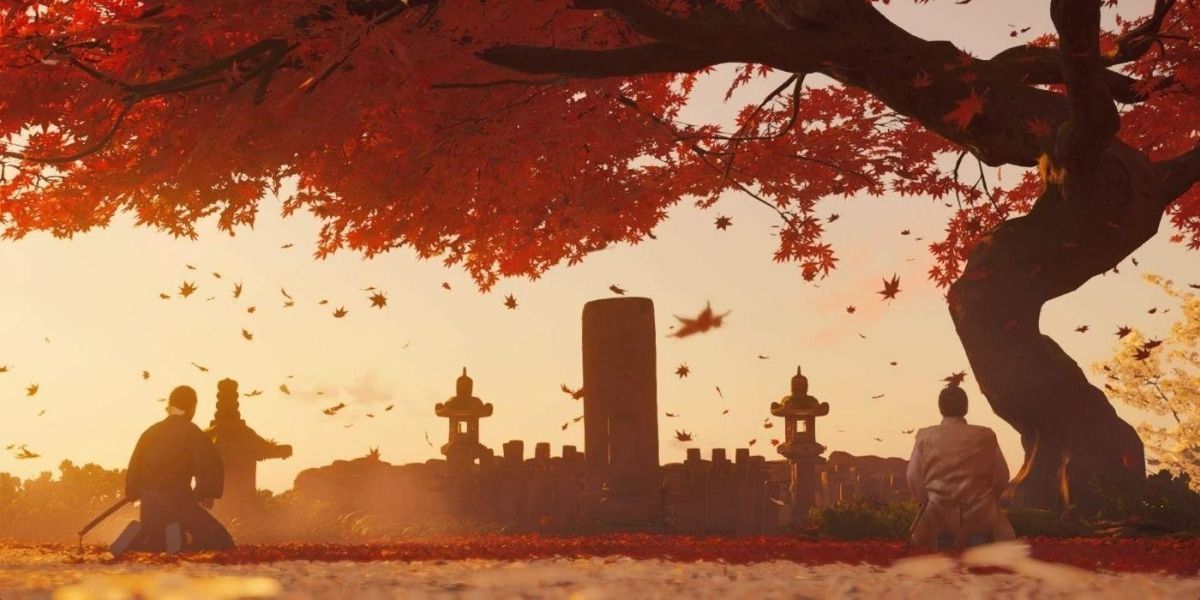Ghost of Tsushima has been the PS4’s fastest selling first-party IP, but some fans found that the “Hard” difficulty in the game at launch wasn’t quite the type of challenge they were looking for. Enemies still had a tendency to stand around and attack one at a time, classic Assassin’s Creed style. Some enemies also felt able to absorb an unrealistic amount of damage, leading players to feel that the Hard difficulty had merely increased enemy health rather than requiring players to develop a greater amount of precision and skill.
Ghost of Tsushima's newly added “Lethal” difficulty mode is a step in the right direction for players who like tough combat, but also for players who want that combat experience to be as immersive as possible. The description of Lethal mode reads “Death is always close at hand. A single sword strike is lethal.” This does not only apply to the player, however.
Why Lethal Mode Works
One of the best features of Lethal mode is that not only are single sword strikes deadly more often than not for the player, but the player’s strikes are more deadly as well. The skill comes in landing the first few strikes to begin with, a design that resembles real-world sword combat far more than most video games, which is appropriate for a period piece of such immense detail.
One of the reasons Sucker Punch’s decision to go in this direction with Lethal mode is such a step forward is because of its implications for the next-gen of gaming. Ghost of Tsushima will be one of the last AAA releases for the PS4, but Lethal mode demonstrates that for gaming to feel next-gen new design philosophies will need to be explored that are unrelated to the hardware being used.
Sucker Punch could have created a new artificially difficult mode that would likely have still satisfied many players. In many games, this means the highest difficulty involves player damage being weakened while enemies are able to take more hits. It isn’t that these games demand greater tactical skill, but that the player has to survive longer and attack more times than in lower difficulties. Ghost of Tsushima avoids these wars of attrition.
Combat Complementing Story
Ghost of Tsushima’s Lethal mode doesn’t inflate the game, it complements its main design principals. It makes the game more immersive by making both the player and their enemies extremely vulnerable, just as they would be in real life. Parrying enemy blows becomes more important than ever in Ghost of Tsushima's combat, not simply having to land more blows on enemies because of their higher health.
As a result, fighting in Lethal difficulty mode can become a series of parries and dodges that makes for extremely tense and cinematic combat, especially in the game's duels. Combat can come down to who can get the slightest edge on their opponent and land the first blow. Tensions are heightened, where, in other games, higher difficulties can lead to drawn out combat that ironically feels less engaging and less immersive.
For players who want to experience the immersive world of Ghost of Tsushima but don’t play video games for the battles, the new patch also added a “Low Intensity” mode, which gives the player more time to react in combat. Sucker Punch seems focused on making sure that no style of play feels less immersive than others.
Ghost of Tsushima has set some high expectations for the next-generation of gaming consoles by showing the extent of what this generation is able to accomplish. The decisions made with Lethal mode demonstrate the ways in which gaming needs to look towards new design philosophies and not simply new hardware if it is going to feel like it’s moving forward and bringing players more exciting experiences where the combat complements the story, rather than combat and narrative feeling like two separate aspects of the game.
Ghost of Tsushima is out now exclusively for the PlayStation 4.

